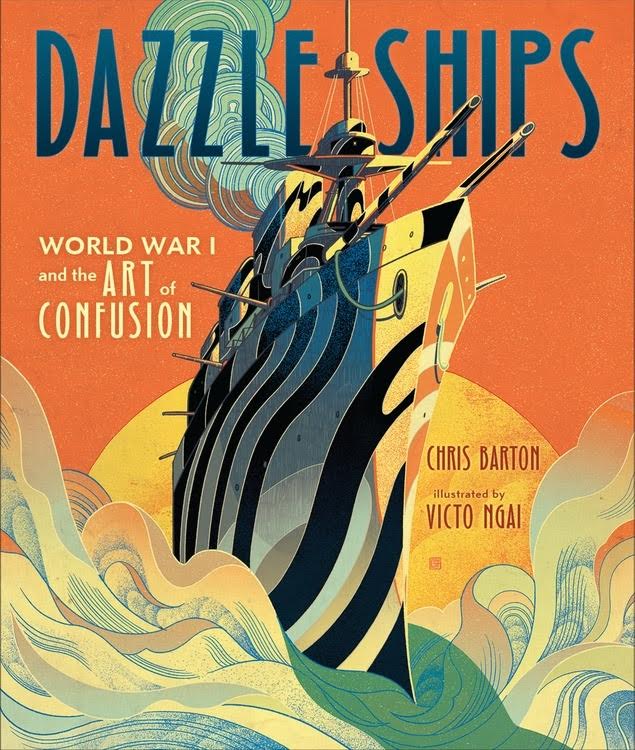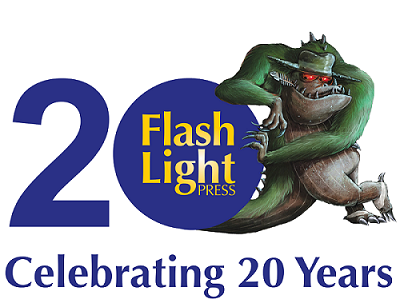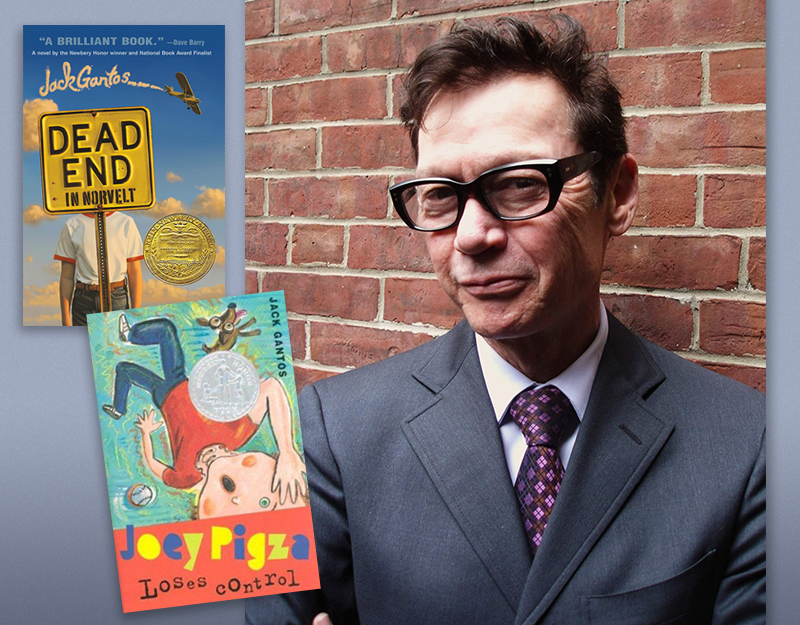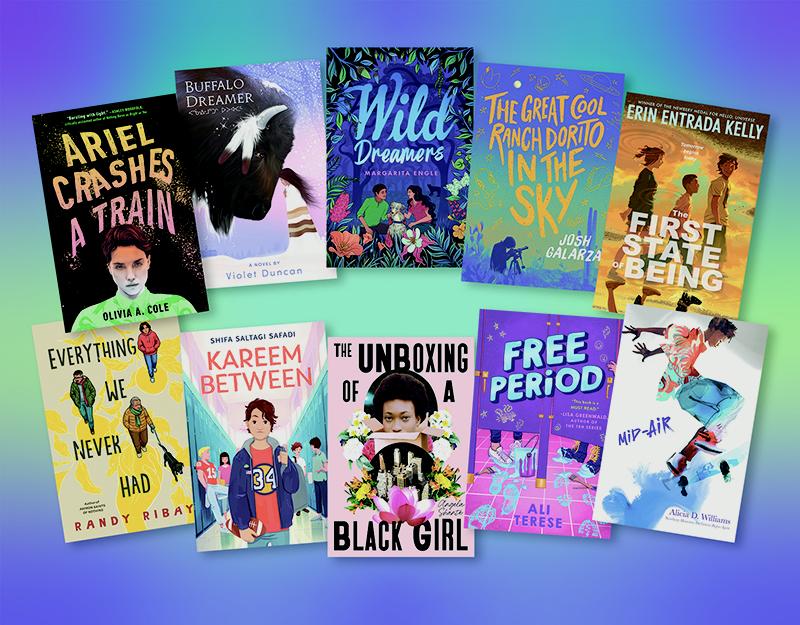31 Days, 31 Lists: Day Twenty-Three – 2017 American History Books for Kids
Of all the lists on this blog this one may seem an odd little inclusion, but I have my reasons. A couple years ago I helped serve on the first committee selecting The New-York Historical Society Children’s History Book Prize. The requirements of the prize are simple: You and a group of schoolchildren must find the best work of middle grade fiction that’s about a moment in American history. The books you choose between can often prove to be fascinating too. I enjoyed the process so much that I’ve tracked works about American history ever since.
Today, I’m actually not going to include any works of middle grade fiction (more on why that is later) but I do have a fair number of nonfiction and picture book titles. Taking care to distinguish in the comments between the works of fiction and nonfiction, I’m just sort of throwing them all into one big pile. The standard rule would be that to qualify for this list it isn’t quite enough for the book to take place in the past in America, but for there to be some kind of tie-in to a significant event in American history.
ADVERTISEMENT
ADVERTISEMENT
Let me know what I’ve missed!
2017 American History Books for Kids
Before She Was Harriet by Lesa Cline-Ransome, ill. James E. Ransome
Perhaps the most unassuming, smartest, most succinct picture book biography of a subject I’ve ever had the pleasure to read. Ms. Cline-Ransome had the notion to tell the story of Harriet’s life backwards, using single defining titles every step of the way. Things like “Spy” and “Nurse”. They’re all job titles, in a way, but they place Harriet both in the context of her times (the Civil War) and summarize her life. Kids might actually benefit from pairing this with Nathan Hale’s The Underground Abductor. They’d get a lot out of both.
Ben’s Revolution: Benjamin Russell and the Battle of Bunker Hill by Nathaniel Philbrick, ill. Wendell Minor
I’ll confess that I’ve encountered the Battle of Bunker Hill in a variety of books and I’m still more than a bit fuzzy on the details. As far as I can tell, if even Mr. Philbrick can’t help me, what hope do I have? This book is infinitely readable, and was interesting to me if only because it brought home the true plight of the starving people of Boston during the occupation.
Dazzle Ships: World War I and the Art of Confusion by Chris Barton, ill. Victo Ngai
At first I wasn’t certain if I should include this book. After all, wasn’t it British warship that received this goofy camouflage covering? Turns out, it was employed by both American and British ships. This story is so incredibly crazy it makes for a perfect adaptation to the picture book format.
A Different Pond by Bao Phi, ill. Thi Bui
I usually will come to a book knowing as little as possible about it. This wilful ignorance on my part is done mostly because I like to see what reactions I might have to the story fresh. Then I go back later and read the criticisms and/or praise. In the case of this book, I kept wondering throughout the story if it was set in Minneapolis/St. Paul. There was just something about the river. Turns out, yes! Fair play to illustrator Thi Bui, because this is a recognizably Minnesotan landscape (I lived there for three years or so and it clearly made an impression). I’m including this book here today because it’s one of the few books I’ve seen to address Vietnamese immigrants in the 70s and 80s.
Fancy Party Gowns: The Story of Fashion Designer Ann Cole Lowe by Deborah Blumenthal, ill. Laura Freeman
If you know me well then you know that my interest in fashion is roughly on par with my interest in goldfish breeding: slim to none. And yet it’s a good picture book bio that can make you interested in someone that normally wouldn’t make a blip on your radar. Why include it on this particular list? Well, I had at least three staff members in my library casually glance at the cover of this book on my desk and remark, “Oh! That’s Jackie Kennedy’s wedding dress”. That’s American history for you. You’ll never know when it might crop up.
Fred Korematsu Speaks Up by Laura Atkins and Stan Yogi, ill. Yutaka Houlette
I am ashamed to say that I avoided this book for most of the year based on the design of the cover. Which, let us face it, could use a bit of a touch-up. Open the book up, however, and you’ve a really beautifully written (and beautifully designed!) retelling of a little known American hero. It was Fred that challenged the constitutionality of the Japanese internment camps. He lost at the time, and paid dearly for his efforts, but years later received the respect and acclaim he deserved. A really great book and one that more kids should read in tandem with all those other internment camp stories they’re given.
Independence Cake: A Revolutionary Confection Inspired by Amelia Simmons, Whose True History Is Unfortunately Unknown by Deborah Hopkinson, ill. Giselle Potter
The creator of the first American cookbook gets a fictionalized picture book retelling of her story. It’s good. I actually learned a bit about recipes.
John Deere, That’s Who! by Tracy Nelson Maurer, ill. Tim Zeltner
SO not my book, and yet I really enjoyed this story. It’s going to be a huge disappointment to any kid familiar with John Deere equipment who might be hoping for a tractor or two. Turns out, John’s interest was in plows and making them better and more efficient. I never thought I’d find the history of plowing fascinating, but it has such important ties to American history. Go figure.
Maya Lin: Artist-Architect of Light and Lines, Designer of the Vietnam Veterans Memorial by Jeanne Walker Harvey, ill. Dow Phumiruk
Maya Lin, your star has risen. Not only was she in an older biography in 2017 but also a board book (don’t ask) and a book about young heroes coming out in 2018. She is remarkably interesting. One day I hope that more people do blind admissions for memorials. This one turned out pretty darn well, after all. Plus it pairs nicely with Rolling Thunder down below.
Motor Girls: How Women Took the Wheel and Drove Boldly Into the Twentieth Century by Sue Macy
I swear I don’t just love it because my own beloved Evanston, IL makes a cameo at the beginning. Macy does her homework so incredibly well, and this book does a marvelous job of highlighting when women attained independence through autos. Macy knows how to make this subject fascinating.
Noah Webster’s Fighting Words by Tracy Nelson Maurer, ill. Mircea Catusanu
I’ve praised this on previous lists, but I found it very interesting that so much of our Americanizations were started by Mr. Webster.
Rolling Thunder by Kate Messner, ill. Greg Ruth
ADVERTISEMENT
ADVERTISEMENT
This one’s a fictional picture book but it follows a true ritual. Every year on Memorial Day a crew of motorcycling veterans participate in the Rolling Thunder® Ride for Freedom, a demonstration that pays tribute to the men and women of the US armed forces. Ties in nicely with the Maya Lin bio.
Schomburg: The Man Who Built a Library by Carole Boston Weatherford, ill. Eric Velasquez

This is fascinating. Rather than limit this book to just Schomburg the man, Weatherford pays homage to his work, informing young readers along the way. In search of the great black heroes of history, Schomburg found ways of honoring so many great heroes. Velasquez keeps up with Weatherford’s premise beautifully, laying down some of the best art of his career. Why don’t we make him do more nonfiction? Plus, the Beethoven mention was entirely new to me.
Take a Picture of Me, James VanDerZee! by Andrea J. Loney, ill. Keith Mallett
A patron in my library commented that too often the biographies of black people they find in the library are about slaves or Civil Rights activists. Nothing against either group, but there’s more to African-American history than two historical events. It was VanDerZee that chronicled Harlem over the decades, becoming a kind of impromptu chronicler of his age. This book does his life and work justice.
A Time to Act: John F. Kennedy’s Big Speech by Shana Corey, ill. R. Gregory Christie
I know. How many more JFK books do we need? Even this year we saw this as well as Patrick and the President by Ryan Tubridy (which takes place in Ireland so I didn’t include it here). What I like so much about Corey and Christie’s book, however, is the fact that the book dares to show how Kennedy wasn’t always on the right side of history when it came to the Civil Rights movement. This might pair well with 2018’s Abraham Lincoln’s Dueling Words by Donna Janell Bowman. Both books are unafraid to show when a president, even a good one, makes a mistake.
What Is Hip-Hop? by Eric Morse, ill. Anny Yi, produced by Nelson George
American history at its finest. Wouldn’t you agree?
The Youngest Marcher: The Story of Audrey Faye Hendricks, a Young Civil Rights Activist by Cynthia Levinson, ill. Vanessa Brantley Newton
I loved this book so much. It’s hard to make The Children’s March something appropriate a younger reader would understand, but Levinson and Brantley Newton drill Hendricks’ story home.
Interested in the other lists of the month? Here’s the schedule so that you can keep checking back:
December 1 – Board Books
December 2 – Board Book Reprints & Adaptations
December 3 – Wordless Picture Books
December 4 – Picture Book Readalouds
December 5 – Rhyming Picture Books
December 6 – Alphabet Books
December 7 – Funny Picture Books
December 8 – CaldeNotts
December 9 – Picture Book Reprints
December 10 – Math Picture Books
December 11 – Bilingual Books
December 12 – Translated Picture Books
December 13 – Books with a Message
December 14 – Fabulous Photography
December 15 – Fairy Tales / Folktales
December 16 – Oddest Books of the Year
December 17 – Poetry Books
December 18 – Easy Books
December 19 – Early Chapter Books
December 20 – Comics for Kids
December 21 – Older Funny Books
December 22 – Fictionalized Nonfiction
December 23 – American History
December 24 – Science & Nature Books
December 25 – Transcendent Holiday Picture Books
December 26 – Unique Biographies
December 27 – Nonfiction Picture Books
December 28 – Nonfiction Chapter Books
December 29 – Fiction Reprints
December 30 – Middle Grade Novels
December 31 – Picture Books
Filed under: Best Books, Best Books of 2017
About Betsy Bird
Betsy Bird is currently the Collection Development Manager of the Evanston Public Library system and a former Materials Specialist for New York Public Library. She has served on Newbery, written for Horn Book, and has done other lovely little things that she'd love to tell you about but that she's sure you'd find more interesting to hear of in person. Her opinions are her own and do not reflect those of EPL, SLJ, or any of the other acronyms you might be able to name. Follow her on Twitter: @fuseeight.
ADVERTISEMENT
ADVERTISEMENT
SLJ Blog Network
Tegan and Sara: Crush | Review
Wednesday Roundup: Pointing at Poetry
The Seven Bills That Will Safeguard the Future of School Librarianship
Take 5: Resources for RA Ideas
Gayle Forman Visits The Yarn!
ADVERTISEMENT

























The Beethoven claim was one of the things that bothered me most about Schomburg. It’s a claim that, from what I understand, no serious musicologist takes seriously because there is no positive evidence for it. At best, it’s not impossible, but no more than that. Weatherford herself starts by writing Beethoven was “said to be” but then proceeds as if it were unequivocal truth. This is doubly disappointing in a book that supposedly lauds combating “lies and half-truths.”
Hm. Thank you for this. Now I’d like to look into it further myself.